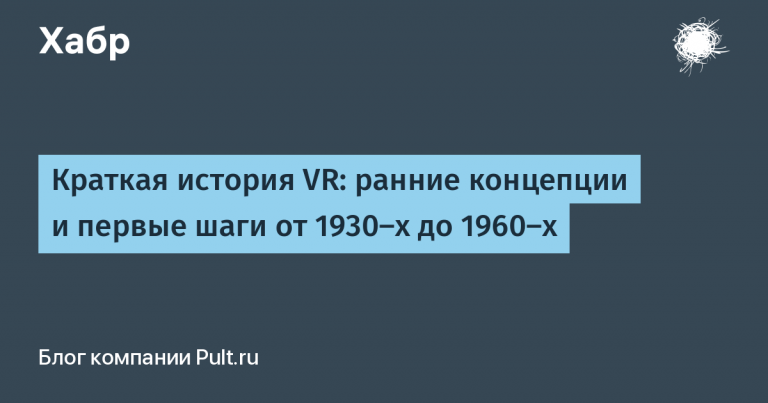A six-legged robot, a new IT profession and a discussion about AI. What else was written about IT in 1978?

January: silicon growing facility and Georgian video phone
In a short technical note they write about monocrystalline silicon, which was previously mined with great difficulty, but now Soviet scientists have developed the “Crystal-206” installation for its industrial production. She made ingots of monocrystalline silicon with a diameter of up to 80 ml and a length of about half a meter. The installation, however, was gigantic and weighed 3,980 kilograms: it contained a melting furnace, a heating generator, a rectifier and an automation unit. I couldn’t find a description or photo of it on the internet, so I’d be grateful if someone would post a more detailed description and story in the comments.
But the second news raises more questions. In Georgia, video phones with a dialer built into the handset were invented. You could talk to anyone on it, but see only those who had the same phone. I wonder how they were going to transmit the video: over telephone wires or did they need a separate line? By the way, on Wiki they write that long-distance video telephone points appeared in the USSR in the 1960s, so this is most likely not a new technology, but an improved version of the old one.

February: Liquid Crystal Professions
The central article of the issue is on several sheets and with color inserts. It reviews devices that use liquid crystals. For example, a display on the screen of which an electronic pen writes, or graph plotters that, at the command of a computer, draw graphs on paper.


The diagram describes how the numbers change in an electronic clock:
When you press input buttons on a computer, numbers and commands appear as specific series of electrical impulses. One combination of pulses means, for example, five, another means nine, the third is a conditional code that includes an adder – a circuit element that performs the addition operation. Everything that happens next is the interconnected transformation of a series of pulsed electrical signals. In the process of performing mathematical operations, electrical impulses are summed up, destroy each other, give birth to new series of impulses, hide in memory elements and come out again at the right moment… In a word, they live and work flawlessly in the complex electrical world of the machine.
March: The bionic beetle 14 years before Boston Dynamic
The six-legged machine took its first steps in a laboratory at Ohio State University. The beetle walked around the computer that controls it, and was attached to it by a cable. I can’t help but think that I’ve already seen this robot in good quality in articles about the first years of Boston Dynamic.
The beetle's speed was only seven meters per minute, but it already showed great promise to engineers: they planned to “teach” it to move without connecting to a computer and feel the road.

It was assumed that the bionic beetle would be used for movement in the tundra and even for exploring other planets.
April: “two zero in favor of TV”, or Promo of Soviet set-top boxes
Another interesting detailed article. Home television games were a new thing back then. Readers are explained at their fingertips how to use the console for playing tennis or football.

It’s surprising that not so long ago, when you turned on an electric razor next to the TV, spots flashed on the screen and spoiled the image.

The technical implementation of television games is compared to a computer – they are based on a computing device that generates a set of impulses, thereby drawing the boundaries of the court and keeping score.
It very much seems that the television – this miracle of radio engineering and electronics, multiplied by millions of copies – is winning another round in the fight for our leisure time, having mastered a new entertainment genre. We are talking about home television games in which the TV screen, completely disconnected from the programs coming from the air, becomes the arena of very funny competitions – such as “tennis”, “hockey”, “football”. You play them with your partner sitting next to you, and this entertainment is somewhat reminiscent of real tennis or real hockey. With the difference, of course, that you don’t need to run and jump, hit with a stick or racket, you don’t need to overcome fatigue, wipe the salty sweat from your face and exert your physical strength in the fight for victory.
Television games are predicted to have a great future and popularity – and the forecast has come true!
May: a story about the new profession of a computer operator
In this issue, the topic of computers is touched upon on a tangent: in the article from the main Soviet HR about new professions between the operator of automatic and semi-automatic lines and the electric pulse stamper, the computer operator is also mentioned:
Conducts the process of processing information on a computer from the control panel; carries out information input into the computer and output from the machine, transmission of received data via communication channels, recording information; controls technical storage media, monitors the operation of computers, establishes the causes of failures in the process of information processing. To do this, the operator must know the structure of the computer control panel and the rules of technical operation, the basics of programming (in the scope of secondary specialized or general secondary education); technical storage media, codes, structure of output tables for detecting failures during computer operation.
June: A computer museum is created in the USA
In this issue, something about IT was found only in the “Kunstkamera” section with various interesting and funny news. It briefly mentions that a computer museum is being opened in the United States and will display the first electronic computer, ENIAC, produced in 1946:

July: once again a little about consoles
They say that employees of the Lvov Design Bureau have developed a game console for home use. It was possible to play “sports” games on it: tennis or football.

August: jacquard loom program, computer vision test, speech synthesizer and pocket computer
A note about the first computer-controlled machines – jacquard machines. On the fabric that the machine created, the program created a pattern recorded on punched cards.
In 1978, they decided to automate the process of programming patterns: they created a complex in which there was a photo of the pattern and a reading device that controlled the process of making a punched card. Thus, the process of preparing the fabric began to take a week instead of 3–4 months.
They also decided to automate the vision testing process in order to give more accurate results: they came up with a device that analyzed light reflection from the retina.

Another contribution to medicine is a speech synthesizer for the mute. It contained pre-recorded sounds and short phrases that were heard when the corresponding buttons were pressed. The manufacturers claimed that the synthesizer could pronounce almost any English word.

Another portable device was invented for schoolchildren: small computers made it possible to carry out calculations and complete assignments in class faster. They were integrated into the educational process as an experiment, but teachers were skeptical about this – even then they were against the use of calculators in the classroom.
September: article by academician Glushkov about artificial intelligence
A large review article about a new direction in cybernetics – artificial intelligence:

The author asks the question: is a computer artificial intelligence? He considers two points of view: that a computer is simply a task performer, and not something autonomous, and the opposite:
Gradually, computer programs improved, became more complex, moved from rigid to probabilistic laws for describing phenomena (and therefore, as it were, mastered the “freedom of choice”), acquired the properties of adapting, learning, and self-improvement. And, it would seem, there was every reason to recognize the validity of the position of those who argued that a computer is actually artificial intelligence.
However, opponents of such an assessment only changed their positions. They deprived EVM of the “presumption of innocence.” When a person is accused of any offense, the accuser is obliged to prove that he committed it; until irrefutable facts are presented, the person is considered innocent. They treated the machine differently: it itself was required to prove its “innocence,” that is, its intelligence. Recognizing that the computer successfully solves many difficult problems, opponents said: “But there are problems that it does not solve! Let him first learn to solve them all, then, and only then, can we discuss the question of whether a computer is comparable to a person in intelligence.”
Cybernetics, of course, understood that such reasoning was based on the false idea that “every person is capable of solving all problems.” But nevertheless, they accepted the challenge and began to explore problems that were considered beyond the reach of computers. Examples of such problems include proving theorems, translating from language to language, composing music, or participating in various intellectual games.
The article is inspired by A. Chachko’s book “Artificial Intelligence,” which dispels skeptics’ doubts that a computer is not artificial intelligence.
October: prototype of an electronic examiner from the Bulgarians
Again, there was nothing about IT in the issue. The only news is that Bulgarian engineers demonstrated in Moscow a system that monitored students’ learning of material during laboratory work. There are tasks that come and go, and there are eternal ones. And automation of knowledge testing is just the second option.
November: two calculators at once – for a business person and for a turner
A West German company has created a calculator for determining cutting parameters on metal-cutting machines, so that turners and millers no longer look for this information in tables. The calculator accelerated the work of specialists by more than 60%.

Engineers from the Japanese company Toshiba have created a hybrid of a calculator and a voice recorder. It fit in your pocket and recorded sound onto two mini-cassettes, 15 minutes each.

December: note about the Canon A-1 camera
A short review of the Japanese camera Canon A-1. Elements of automation were added: if the photographer did not release the shutter button, the camera itself moved the film to the next frame and took a photo. The shooting speed is up to five frames per second: it was convenient to photograph movement.
In general, all numbers show that IT is only one and far from the most comprehensive and promising area. It is mentioned briefly, and in some issues there are only small notes about various funny electronic devices. Well, some of the problems and issues described seem to be still being resolved. That's all for me, I can think about where to move next.





